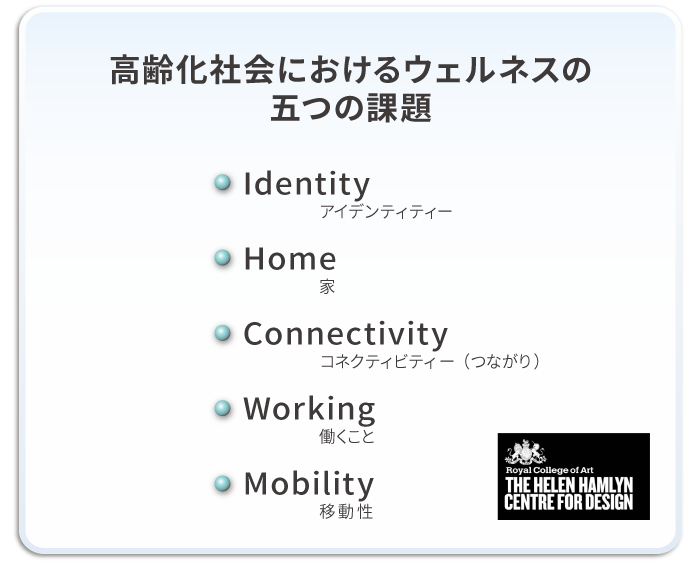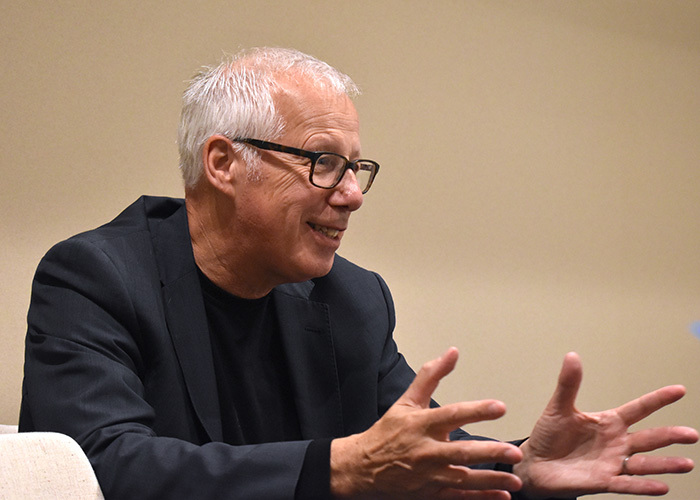Note: This website was automatically translated, so some terms or nuances may not be completely accurate.
What is the "world's most prestigious graduate art program curriculum" that draws executives from over 50 countries to study in the UK?
engawa KYOTO, Dentsu Inc.'s business co-creation hub, opened on July 22, 2019. As part of its opening program, a two-day workshop featuring the world-renowned Royal College of Art (RCA) was held on September 5 and 6.
The program's theme was "Innovation Masterclass in Kyoto." Its content, jointly developed by engawa KYOTO and the RCA, was designed to teach "design thinking" and provide hands-on experience with concrete processes for driving innovation.
This time, Yoshihiro Kudo from the Dentsu Inc. Kyoto Business Acceleration Center introduces the program content led by Professor Jeremy and others, who have conducted numerous Executive Education sessions in London, along with an interview with the professor.
※Royal College of Art (RCA): The world's premier graduate art and design university, ranked #1 in the QS World University Rankings for Art & Design for five consecutive years since 2015, producing graduates who excel in the business world, such as James Dyson.
What is "Design Thinking" that generates innovation?
The theme chosen by Professor Jeremy for his keynote speech at the workshop held on September 5 was "Design Thinking for Wellness in an Aging Society." Here is an introduction to its content.
(Professor Jeremy speaking)
What is design thinking? In the 19th century, the British engineer Isambard Kingdom Brunel proposed the railway, inspired by the idea: "Couldn't we transport people as if they were floating?" James Dyson revolutionized household cleaners by miniaturizing the cyclone technology used in sawmills.
Both had moments of inspiration. To shape that creative spark into innovation, a process is needed. That process is precisely what we call "design thinking."

It involves applying the thinking process for any matter to four stages: 1. Discover, 2. Define, 3. Develop, and 4. Deliver. This involves repeatedly cycling through "divergence" and "convergence." This is design thinking.
Moving back and forth between the real world (1 and 4) and the world of imagination (2 and 3) is paramount.
Traditional marketing only looks at the real world. Discovery, definition, development, and delivery all rely on what is considered correct in the real world, leading to what is deemed the right conclusion and then implementation. Before you know it, you're left with only mediocre strategies and mediocre products, making the world feel cramped and ugly. The "divergence" and "convergence" of thought. It is precisely within this process that the potential for innovation lies.
Five Challenges in Designing an Ideal Aging Society
If we perceive aging as "the decline of human functions," we end up with a typical model of aging. Design thinking encourages us to move away from the fixed perspective of "aging = illness" and instead consider "aging" from a more social and cultural standpoint.
To design an ideal aging society, we face the following five challenges:

1) Identity
Seek what one can contribute to society now, rather than focusing on past status or honor.
2) Home
Co-creating comfortable homes together.
3) Connectivity
Preserving and connecting the community bonds that were once commonplace—public baths, tobacco shops, Bon dances, neighborhood bulletin boards.
4) Working
Creating workplace environments that welcome people even as they age.
5) Mobility
The ability to move independently even as we age. Society must build the environment to support this.
The crucial point is for us to think from the perspective of the elderly. Innovation materializes when we optimize these three areas: technology, the lives of users, and business.

What is the essence of "design thinking"?
Next, we present an interview with Professor Jeremy about the objectives of this seminar and workshop.

Q. Applying design thinking to business. What is the goal?
Many companies now realize that "doing the same thing over and over won't work." In other words, it's crucial to view things through a different framework than before.
The key point of design thinking is that it's not about the product itself, but about the people who use it or buy it—in short, it's "people-centered." I believe the strength of art and design lies in their ability to create pathways and processes that lead from the present to the future.
Q. How can one hone design thinking?
I call it a "creative journey." The indispensable part of the thinking process is first to "try it out." It's trial and error, but blindly trying things repeatedly is meaningless. Valuable practice requires principles. Things are formed by the interplay of reality and imagination. Knowing the "variables" that govern this interplay is the key to innovation.
Q. What prompted you to hold RCA in Japan?
It started when a staff member from Dentsu Inc., who attended our London workshop, suggested bringing it to Japan. I found it a very intriguing proposal. Workshops are constantly evolving; both the instructor and the participants discover something new each time. It's not one-way; both sides learn from each other. That's where the value of a workshop lies, I believe.
Q. Are there differences between Japanese and British participants?
Compared to the British, Japanese people tend to be more cautious. This caution means they have a lower tolerance for failure and prefer to think things through thoroughly. I believe the Japanese approach to things is very spiritual and traditional, as exemplified by wabi-sabi.
I often get asked, "Can Japanese people become designers?" Of course they can. However, I believe this requires permission from those around them or from above, essentially saying, "It's okay for you to become one." To truly apply design thinking, I also think you need the courage to give yourself that permission.
Q. What's your impression of engawa KYOTO?
In our workshops, which we call "Open Courses," where people from different industries gather, it's crucial to realize that everyone shares the same struggles, regardless of who they are. To gain that realization, sharing time and space is vital, and engawa KYOTO is the perfect place for that.
People often panic when told to "create innovation," or assume it's only possible for those with special talents like designers. That's not true. Embarking on a journey of thought under a structured "system" is something anyone can do.
I often cite the metaphor of "suits and sneakers." When people working for large corporations, or even running them, converse in the same space with ordinary citizens, that's precisely where the spark for innovation can ignite.
Concluding the Program
I will now resume summarizing the program.
The program concluded to great success, and we were delighted to receive feedback expressing a desire to spread the principles of design thinking within their organizations immediately upon returning. RCA faculty also commented, "Typically, after a two-day workshop, some members start to lose focus or disengage. This time, however, it was a rare session where momentum remained high right until the end."
I believe a key factor in this success was not only the RCA faculty's methodology and facilitation but also the diversity of participants. The program participants were remarkably diverse, including globally active private companies, government officials, traditional craftsmen, monks, startups, and students from Kyoto's art universities.
My impression is that when members gather from diverse organizations, the language and common sense of their own organizations don't necessarily apply. This makes it easier for individuals to express their personal opinions rather than views burdened by organizational affiliations. Discussing in such an environment may help uncover more fundamental human challenges.
A key message from RCA was "Observe people thoroughly and empathize." This means adopting not just your organization's perspective, but the viewpoint of an individual human being, and finding the essential question "How might we...?" by standing alongside people.
Moving forward, we will conduct follow-up sessions to deepen the ideas generated in this workshop, use the approaches learned here to develop more concrete business concepts, and provide ongoing support toward business implementation.
We are designing these follow-up sessions in various formats: sessions with the original workshop participants, sessions involving new members from other departments within participating companies, and sessions developed jointly with external co-creation schemes.
At engawa KYOTO, established in Kyoto's Shijo-Karasuma area, we provide a space and programs where diverse people gather to co-create, and we look forward to exploring ideas together with many partners.
We invite you to visit engawa KYOTO, where the concept is "blurring the boundaries between inside and outside." When you pass through the entrance, which at first glance doesn't look like an office, your "creative journey" will already have begun.
Also, be sure to check out the Dentsu Inc. Kyoto Business Acceleration Center's web media platform "JAMJAM!"
Was this article helpful?
Newsletter registration is here
We select and publish important news every day
For inquiries about this article
Author

Kudo Yoshihiro
Dentsu Inc.
Kyoto Business Acceleration Center
Engaged in plant project management in Asia at a general trading company. After joining Dentsu Inc., worked on new business initiatives including establishing the business co-creation space "engawa KYOTO" in Karasuma, Kyoto, and designing innovation workshops in collaboration with an art school.

